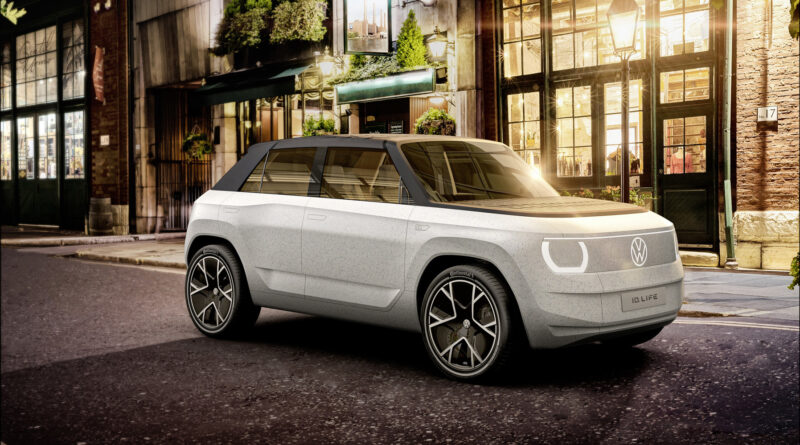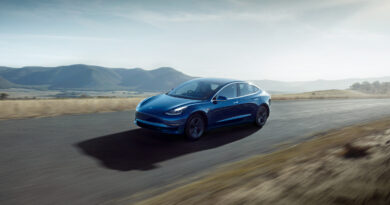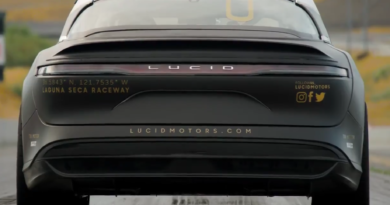Volkswagen electric car family to grow, sub-$30K ID.2 previewed
Volkswagen has unveiled its ID.Life concept car that gives a glimpse of the most affordable vehicle in the growing ID EV family planned to hit the market in 2025.
Tipped to be called the Volkswagen ID.2 – although a Volkswagen ID.1 is also reportedly in development, so it could also adopt that name – when it arrives as a production car, Volkswagen is targeting a European starting price of about 20,000 Euros, or around $30,000.
“The ID. Life is our vision of next-generation fully electric urban mobility,” said Volkswagen brand CEO Ralf Brandstätter in revealing the new EV city car.
“The concept car provides a preview of an ID. model in the small car segment that we will be launching in 2025, priced at around 20,000 euros. This means we are making electric mobility accessible to even more people.”
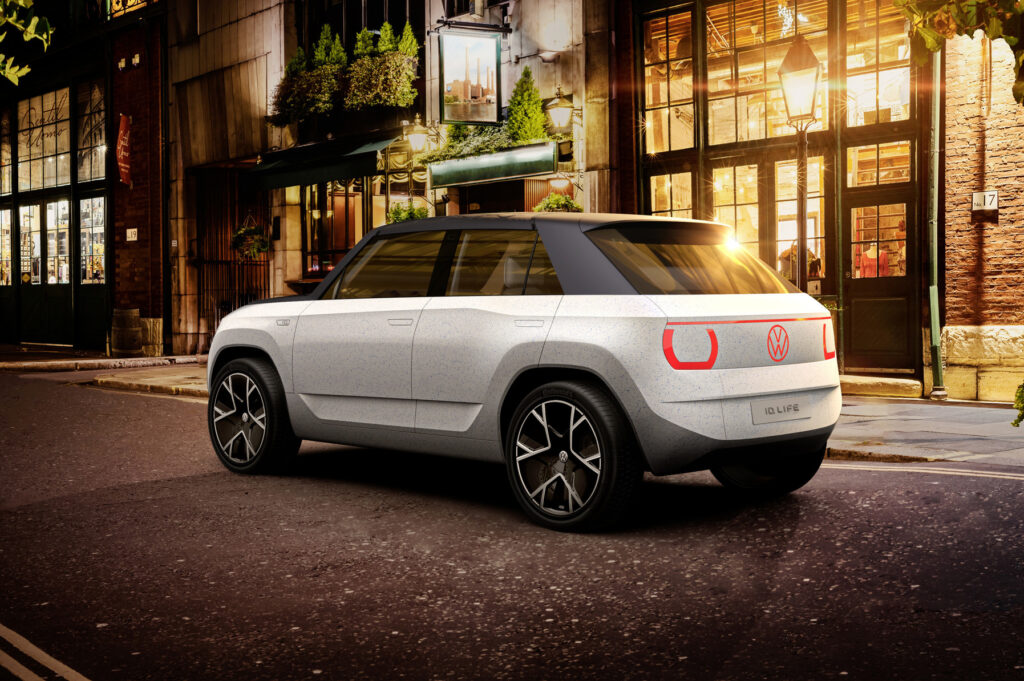
Key to that accessibility is a new front-wheel drive electric architecture based on Volkswagen’s MEB (modular electric drive matrix).
READ MORE: Volkswagen ID.1 and ID.2 affordable electric cars nearing“
READ MORE: X is the new I: Sporty GTX version of the Volkswagen ID.4 revealed
READ MORE: ID.4 the most important Volkswagen ‘since the Beetle’
READ MORE: Volkswagen ID.8 confirmed as large electric SUV flagship
READ MORE: ID.7 electric Kombi to join Volkswagen EV lineup
READ MORE: Feature subscriptions and over-the-air updates for Volkswagens
Whereas the Golf-sized ID.3 electric hatchback and ID.4 mid-sized SUV each have a rear-drive layout, the ID.Life uses a front-drive setup tailored for the compact dimensions of the car.
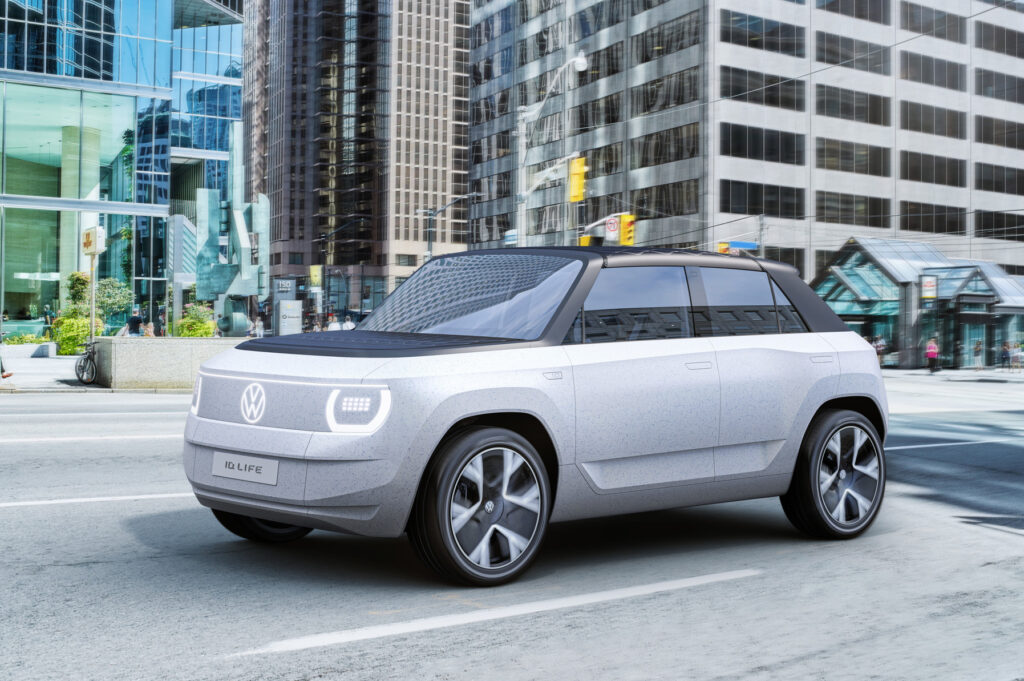
But it still promises thoroughly respectable performance from a 172kW electric motor – just shy of the 180kW produced by the Golf GTI hot hatch – for 0-100km/h acceleration of 6.9 seconds.
Overseas reports suggest there will also be a hot hatch GTX version, in line with Volkswagen’s plans to provide sportier variants of its ID models.
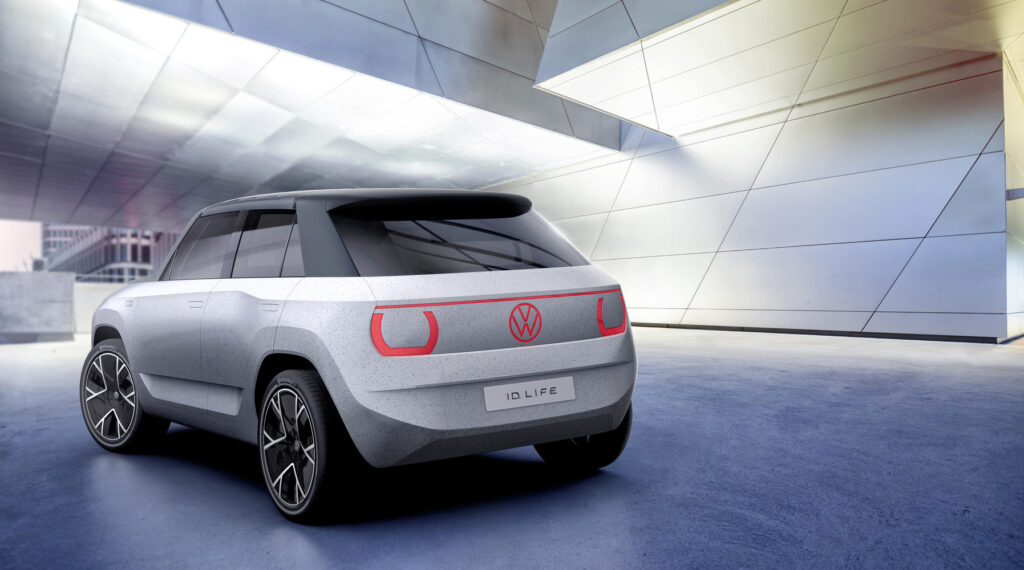
A 57kWh battery pack built into the floor of the ID.Life provides a WLTP range of about 400 kilometres.
Volkswagen says the layout reaffirms the flexibility of the MEB platform and that “we’re just beginning to tap into the potential of MEB”.
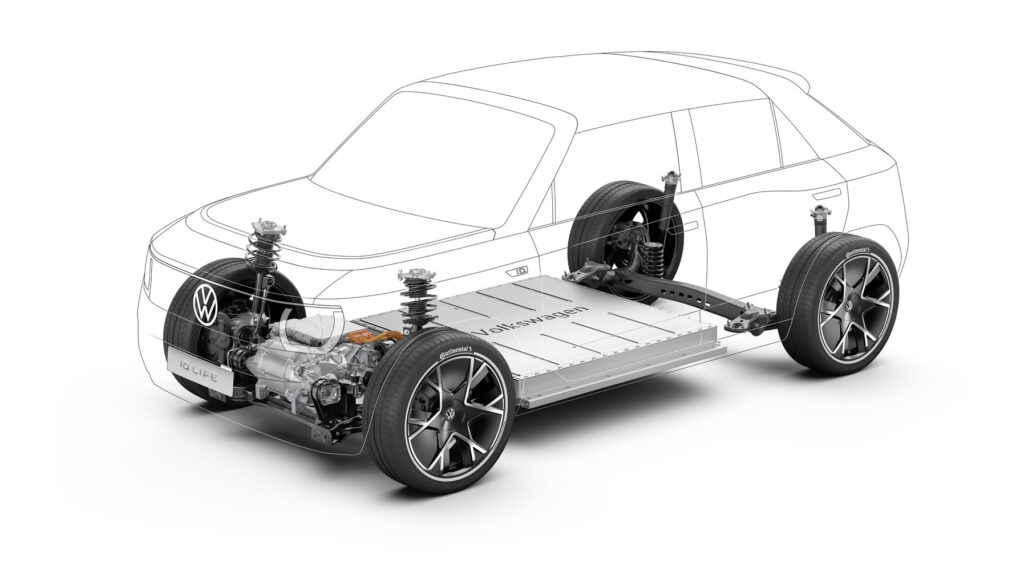
“Performance, charging capacity and range will continue to improve with each new model and software update,” says Thomas Ulbrich, member of the Volkswagen Brand Board of Management for Development.
Volkswagen says the design of the ID.Life is all about simplicity and does without many of the additional trim elements and extras typically used as jewellery.
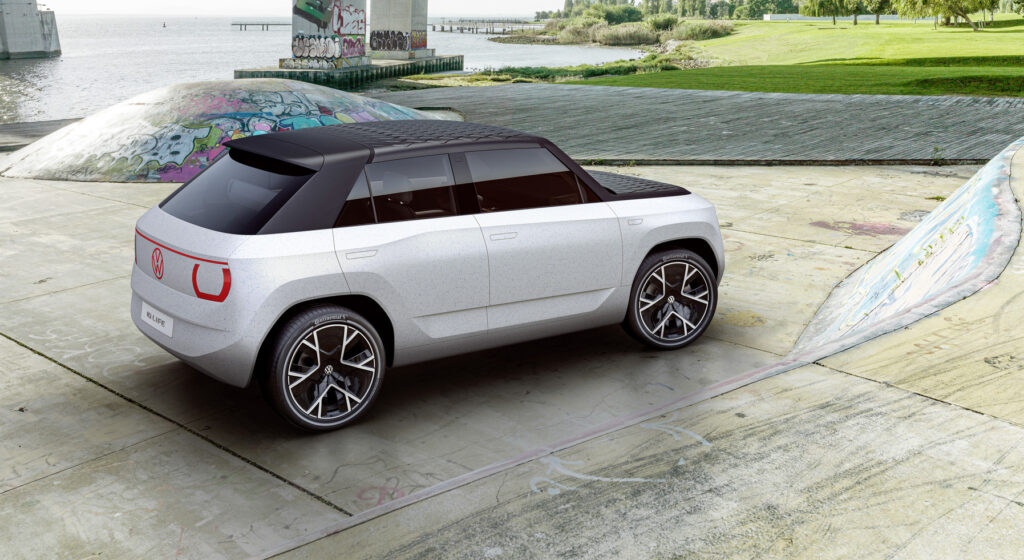
Instead, it’s all about a “purist appearance”, in part, no doubt, to keep the manufacturing cost down.
There’s also a focus on environmentally friendly and sustainable materials.
Instead of using paint, wood chips are used in the clear coat finish over the body to provide colour.
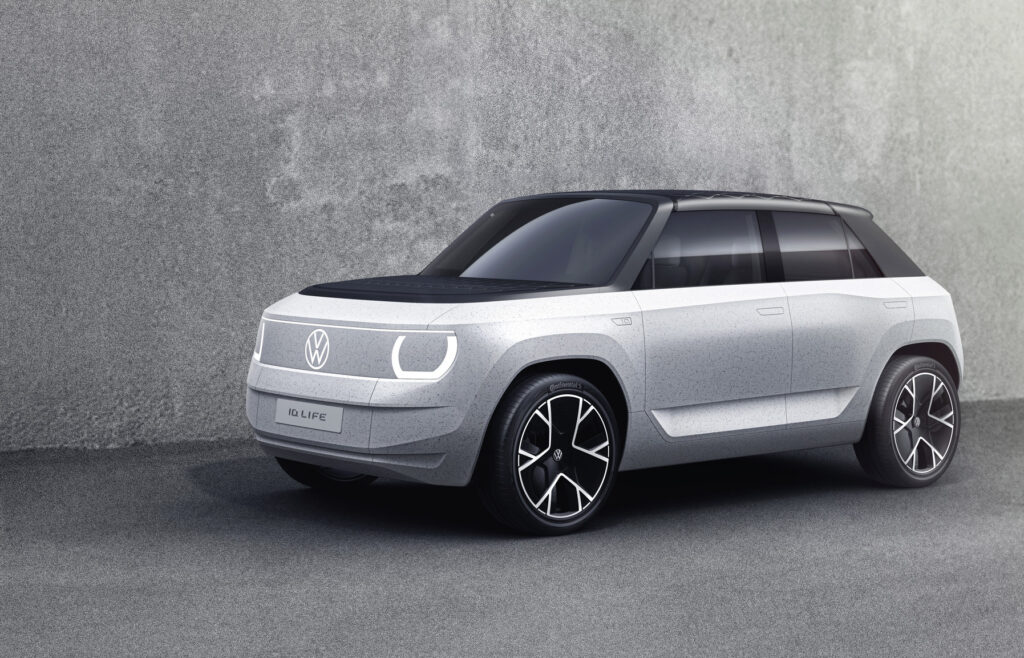
And the roof and bonnet are made of recycled PET plastic bottles.
Wood finishes inside are complemented by a material called ArtVelours Eco on the seats and door panels. It’s a microfibre made up of 20 percent recycled plastic.
Tyres are made of “bio-oil, natural rubber and rice husks”.
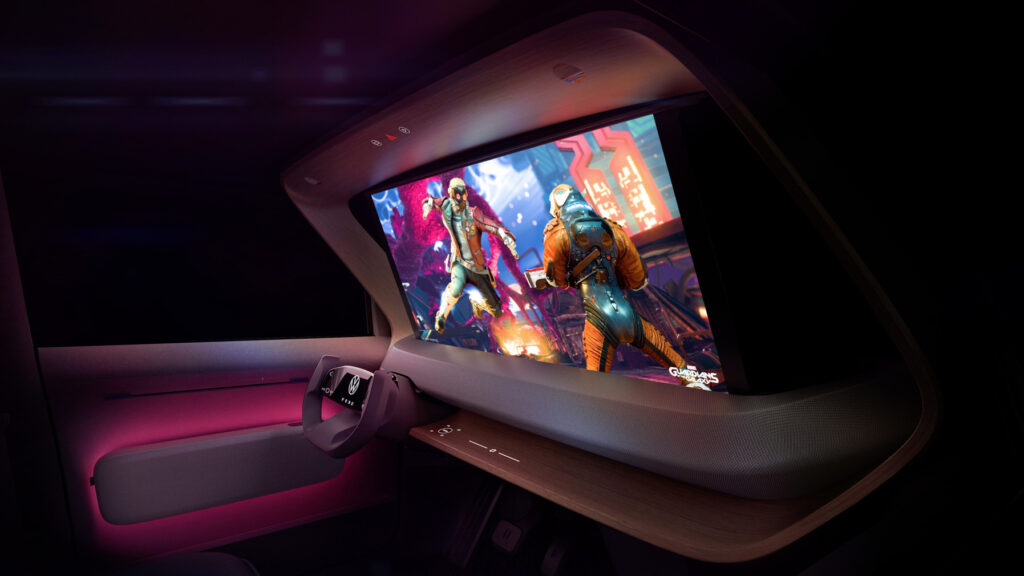
In line with the youth focus, the ID.Life has a games console and projection screen and the car is ready for more – from a DJ music setup to a fridge – with a 230V power outlet onboard.
Fold down the front seats and the ID.Life is turned into a cinema of sorts, complete with a bed if the movie drags on.
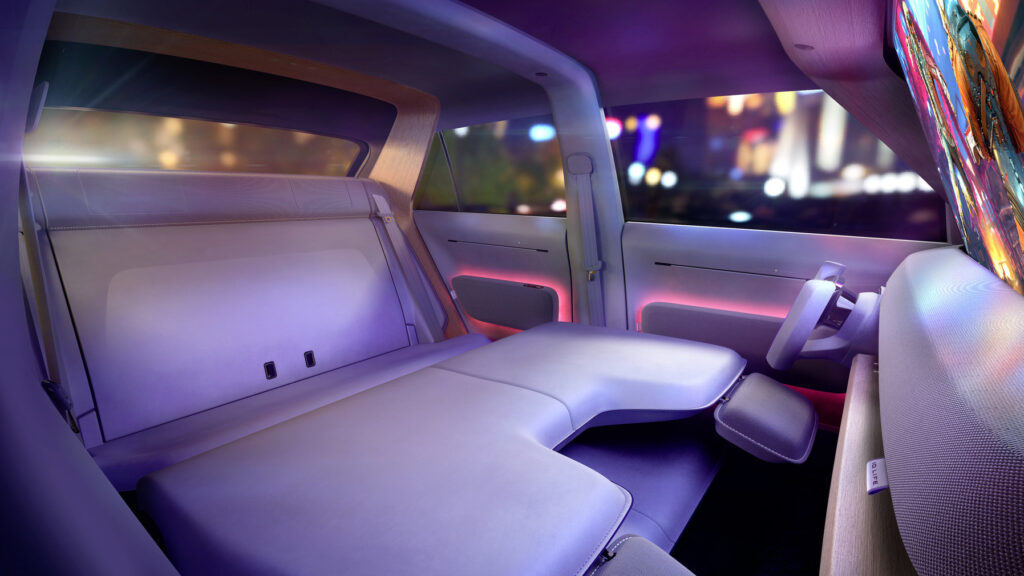
The operating system is also based on simplicity and is designed to integrate a smartphone, allowing younger buyers to incorporate what is arguably their most important device into their transport.
Plus there are no exterior mirrors, with cameras instead projecting images onto screens inside, in part to improve aerodynamic efficiency.
As for pricing of the 2025 production car, Volkswagen says what could be called the ID.2 will cost about 20,000 Euros, or £17,000.
That makes it about the same as a Volkswagen Polo in the UK, which in Australia kicks off at about $20K.
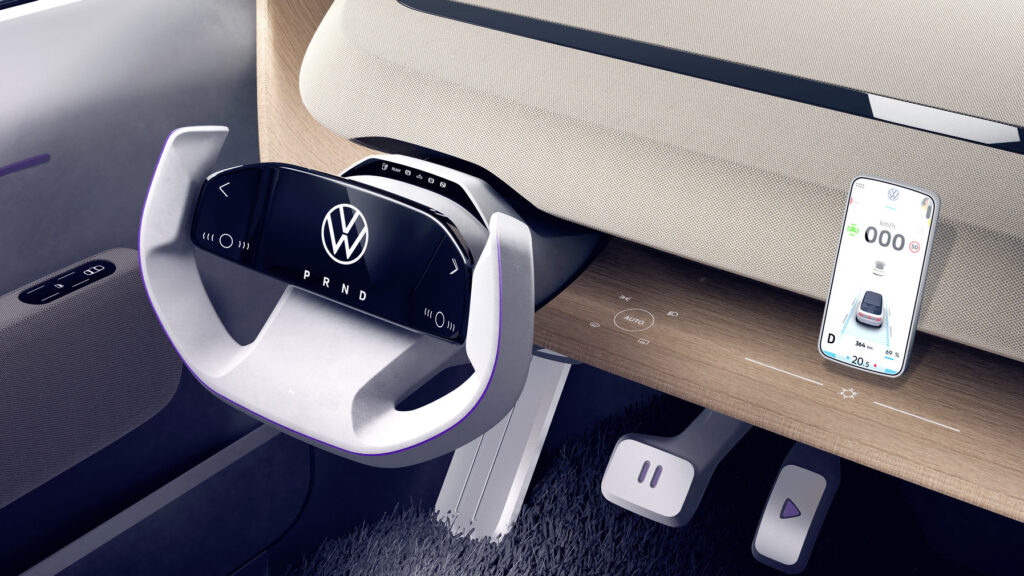
However, that doesn’t tell the whole story. Due to a complex tax system on cars in Europe – designed to lower CO2 emissions – car makers are desperate to sell more EVs to offset potential tax penalties on their ICE counterparts. So the price relativities are not always what might be expected in a market such as Australia, which is largely unaffected by such pressures.
Still, it’s safe to assume that Volkswagen is aiming the ID.Life at the more affordable end of the EV market, likely below $30,000.
The big question is whether it will come to Australia.
Volkswagen Australia currently sells no hybrids or EVs locally, although it has its hand high in the air.
The car that interests it most is the ID.4 and Volkswagen has previously said the earliest that car could arrive is 2023.
When contacted, a Volkswagen Australia spokesperson told us: “While there is as yet no discussion, ID.Life would be most desirable. The brand is hard at work making the case for the ID.4.”

